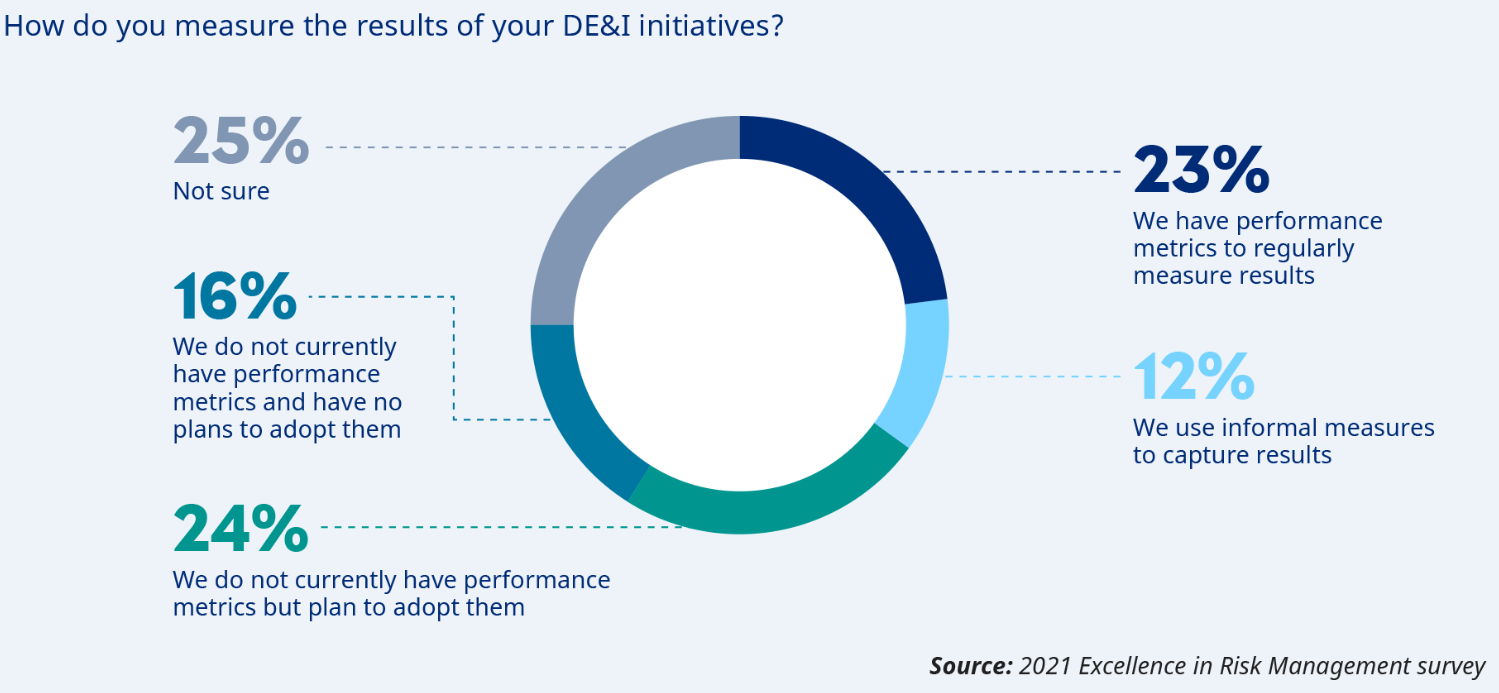Will Diversity, Equity and Inclusion Be Sustained?

To make DE&I a priority, leaders first need to recognize how a diverse team and stakeholders can improve a business’s operations and increase resilience. Organizations can then determine the steps required to improve DE&I.
Photo: Pexels
Diversity, equity, and inclusion (DE&I) are gaining traction in the business world. Following a year that highlighted inequity in health care and beyond, best-in-class organizations are continuing to refine their DE&I strategies, aiming to make their workplaces more inclusive and reflective of the increased diversity of the U.S. population.
The 2021 Excellence in Risk Management project, a joint collaboration between Marsh and RIMS, found that while companies have made progress on DE&I, numerous gaps and areas for improvement remain.
The Case for a DE&I Strategy
Why should organizations make DE&I a strategic imperative? Perhaps most importantly, fostering a diverse, equitable and inclusive culture is the right thing to do. And increasingly, employees, customers, investors and communities demand it.
There are also clear business advantages. Companies that prioritize DE&I and embed it within their business strategy are often better able to hire and retain talented employees to meet the needs and expectations of their customers, stakeholders and the organization as a whole. And because employees — especially ones from diverse backgrounds — at companies that prioritize DE&I have an enhanced ability to reach their full potential, they are also better positioned to help their organization improve performance.
Diversity of thought helps companies make strides forward. In fact, companies with diverse executive teams have been shown to perform better financially. One study found that the most diverse S&P 500 companies have better results and their shares tend to outperform firms that are less diverse. The study, carried out by The Wall Street Journal, also found that a diverse workforce can lead to better products and more innovation.
Considering these advantages, it is heartening that the majority of respondents to the Excellence survey said DE&I has increased in their organization; close to one-third of respondents said the increase was significant (see Figure 1).
DE&I Improving in Most Organizations
Addressing Risks Starts With Recognizing Them
Failing to effectively address this strategic challenge can threaten organizations socially and financially. In multiple conversations held as part of the Excellence project, C-level executives, risk managers and experts in the field underscored that lack of DE&I is a major challenge and can hold back organizations. And yet, just over half of survey respondents consider DE&I a core business risk.
With organizations, communities and individuals increasingly expecting businesses to be diverse, equitable and inclusive, a lackluster DE&I strategy — or the total lack of one — may lead to negative business outcomes. More companies are inquiring about the diversity efforts of current and potential business partners, and those that fall short risk losing existing clients and face difficulties attracting new ones. Organizations will struggle to attract and retain the best talent and face clear reputational risks for not getting DE&I right.
To make DE&I a priority, leaders first need to recognize how a diverse team and stakeholders can improve a business’s operations and increase resilience. Organizations can then determine the steps required to improve DE&I. The Excellence report includes a number of recommendations, most of which do not require major investment. They do, however, require a clear commitment to make the right changes, including reviewing current recruitment and promotion opportunities for diverse individuals and ensuring representation across the organization.
The Public-Private Divide
The Excellence survey found that public companies tend to be more advanced when it comes to DE&I initiatives. Although two-thirds of private company respondents said that DE&I has improved within their organizations, less than half said their organization has a formal DE&I program or considers DE&I when hiring new team members.
It is, to an extent, understandable that public companies generally have made more progress. They are typically larger than private companies, and thus tend to have more resources. In fact, the Excellence survey found that larger companies were more likely to have a DE&I program. Publicly listed companies also tend to be under increased scrutiny by shareholders and the general public, which may lead to a heightened risk of litigation. According to one report, 99% of Fortune 500 companies have paid settlements in at least one discrimination or sexual harassment case.
Private companies, however, cannot afford to be complacent. For example, those that plan to go public would do well to advance their DE&I journey before scrutiny increases.
And even those that have no immediate plans to go public should understand the financial and cultural advantages of instilling clear DE&I principles within their organization. Diversity of thought will help elevate their organization, both among employees and clients. And they will do well to prepare to someday face the same level of scrutiny experienced by larger companies.
Measurement Is Key to Improvement
Measurement and improvement go hand-in-hand. That’s why it is concerning that less than a quarter of Excellence survey respondents said they have performance metrics to regularly measure the results of their DE&I initiatives (see Figure 2).
Regular Measurement Still Lacking
Some organizations struggle to understand what they should be measuring, while also being challenged to collect the right data, beyond demographic information. Understanding demographics is a good start, but it is not enough. To understand the effectiveness of DE&I initiatives, leaders require insight into areas such as promotion and retention rates and how these may differ among different demographic groups.
For companies with clear DE&I goals, measurement can help them remain accountable and ensure they are on the right track. Of course, leaders need to be committed to making changes based on the findings. It’s essential to drill deep into the metrics and understand the reason for particular results. For example, if there is a higher churn among a particular employee demographic, data can help to understand why and develop changes to address the challenge.
Making DE&I initiatives successful over the long term requires a commitment to continuous evaluation and improvement, not start-and-stop efforts. Companies that prioritize DE&I will be better positioned for consistent and sustainable growth, while also contributing to a more just society.






